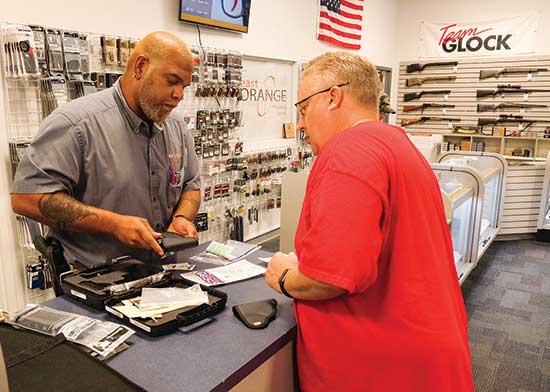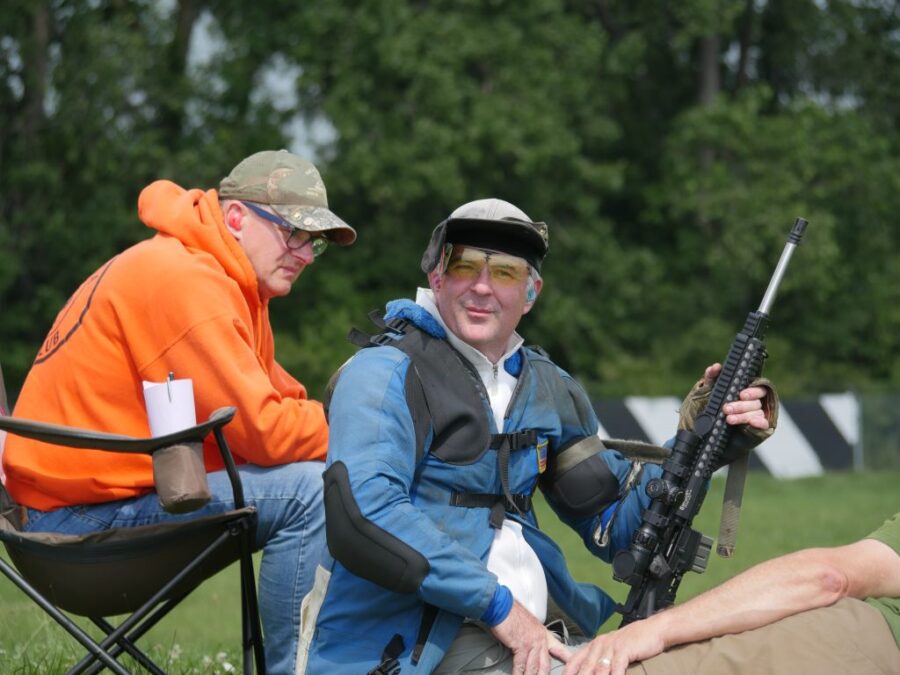Raising The Bar Of Sellers’ Responsibilities
Editor’s Note: We’re republishing an article that ran in Massad Ayoob’s then-Lethal Force column (under the title “Sept. 11 Raised The Bar Of Sellers’ Responsibilities”) in the Dec. 2001 issue. It has several practical insights useful for store owners today. The article has been lightly edited.
The atrocity of September 11 galvanized our nation. It was a wake-up call to thousands of American citizens to finally pull their heads out of the sand and realize there is danger in the world.
And Americans began arming themselves.
The upsurge in retail gun sales and related goods is much needed for a flagging industry — a small silver lining in a very dark cloud. Will it continue? Our citizens’ reasonable fear may not have good cause to abate any time soon.
This is the third wave of desperation-motivated gun buying. The first came in the mid 1990s, and was driven by a fear of pending gun legislation that would wipe out the chance to ever own either a modern long gun designed for defense or a personal-protection handgun. The second came in 1999, with the media-fueled Y2K panic.
In all three cases, we had a break from the normal buying paradigm. Traditionally, a person who bought their first gun was like a person buying their first chainsaw: They made the purchase to meet an immediate need, not merely to “have it just in case.” Since the product was used right away, they immediately learned to use it correctly and safely. Often, the learning came before the purchase.
This changed during the three waves of panic-driven gun buying. We now have a large number of citizens who bought guns and ammo, but have not learned to use them or even store them competently and safely. I fear this will lead to a spate of tragic firearm accidents, which will break the almost continual reduction of such danger over the past several years.
Close Scrutiny
The upsurge in self-protection and gun buying may have been a blow to the anti-gun movement, but they’re still strong and active. Those who want to take away our guns will exploit any misstep by anyone in the industry.
Make sure you’re giving gun buyers written documents listing sources of safety training, and make them sign a document stating they’ve received the list. Be sure to include gun safety literature with the firearm, preferably as part of the gun’s packaging.
Either make training classes available through affiliate organizations or establish the training yourself. You and your staff can be trained and certified as firearms and personal protection instructors through the NRA.
They can also refer you to training counselors who train and certify instructors in your area. In addition to covering yourself and your firm from liability, training classes create another revenue source.
First Self-Defense Guns
Events like the Sept. 11 atrocity motivate a certain kind of first-time gun buyer.
This type of buyer is not the prospective hunter who has been thinking about hunting, reading about what guns are available and developing a good idea of what he wants. Instead, this is someone thinking in a bigger picture and making a decision more suddenly. This is a customer who needs more of your time in helping him determine what to buy.
Do a quick assessment of the purchaser’s motivation and span of attention along with price range and intent. Sure, when cost is no object, a $1,000 semi-auto shotgun setup to do a SEAL-team member proud might seem a logical choice. But is the buyer committed sufficiently to learn and retain its manual of arms?
Yes, a premium 1911 with a tactical light is within this buyer’s budget. But is he ready to work a cock-and-locked pistol with a short, easy trigger? Is he cool enough to not accidentally honk the trigger in panic when he’s searching the house something that went “bump in the night?” If this happens, he might shoot at the beam of a flashlight — and it might not be a “shoot target.”
In handguns, the double-action revolver has traditionally been the recommendation of those who believe in the KISS principle: Keep It Simple, Stupid. The double-action-only revolver is even simpler, and more forgiving of stupidity. The double-barrel shotgun, preferably the hammerless kind that “on-safes” itself each time the action is opened, has served the same function on the shotgun side for decades.
The next step-up in scattergun difficulty is the conventional pump gun. This has long been a common “entry level” gun among hunters, and is the traditional L.E. “riot gun.” For most of the last century, lawmen were woefully undertrained with their shotguns. Yes, there were accidents in untrained hands, but not an epidemic of them.
Key Questions
Don’t forget to ask the buyer who else might be using the gun. If there’s a petite wife at home who might need recourse to the weapon — even though your customer is a 6′ male in a soccer shirt — you might want to recommend a short-stocked, light-kicking 20-ga. instead of a full-size 12-ga. with 3″ Magnum shells.
Then again, the buyer may be a woman. This was not unusual in normal times, and is even less so now. Reports indicate a large number of new-gun buyers motivated by Sept. 11 are women. Helping them make the right purchase of a self-defense gun may take longer.
(Editor’s Note: Here in 2020, progress has certainly been made. Dealers — and industry manufacturers — are better prepared/equipped to meet the needs of women today compared to 20 years ago!)
Final Thoughts
With terrorism reaching our shores, Americans are thinking in terms of preparing for loss of electrical power, food delivery and other emergency services. This means the kind of survival-goods marketing that worked in serving your customers’ perceived Y2K needs is due for a comeback. Inventory accordingly.
You’re selling safety and peace of mind. Nothing creates greater customer satisfaction. Nothing brings customers back more reliably to do more business. But most importantly, we all have a responsibility to do it right.
Dealers, how does panic buying due to COVID-19 compare to previous rushes? What inventory and marketing strategies have you been employing at your store? Send the SI team an email:
comments@shootingindustry.com






